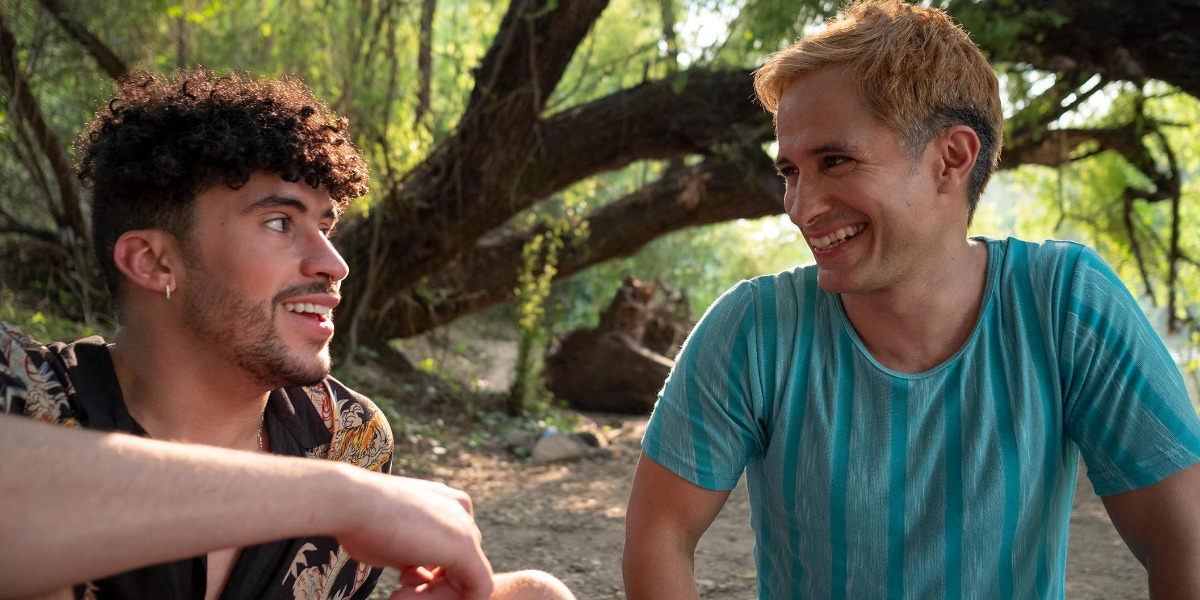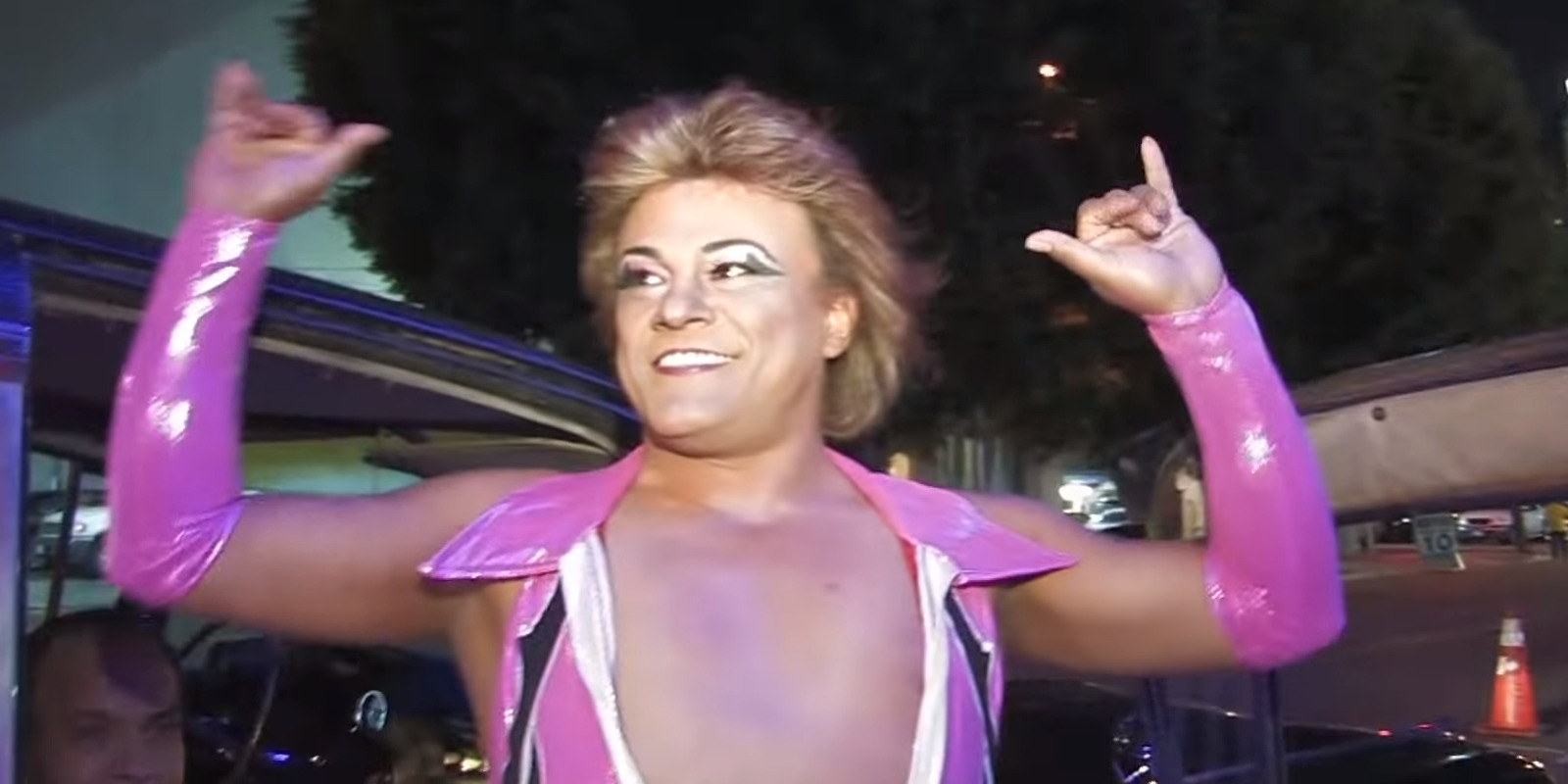Is Cassandro Based on a True Story?
Roger Ross Williams’ sports drama film, ‘Cassandro’ tells the moving story of Saúl Armendáriz, a gay lucha libre wrestler in 1980s Mexico. The film follows Saúl through his early luchador career when he fights as “El Topo,” a meek stage persona with guaranteed losses. After a while, Saúl runs into another local wrestler, Sabrina, a.k.a. Lady Anarquía,…
Roger Ross Williams’ sports drama film, ‘Cassandro’ tells the moving story of Saúl Armendáriz, a gay lucha libre wrestler in 1980s Mexico. The film follows Saúl through his early luchador career when he fights as “El Topo,” a meek stage persona with guaranteed losses. After a while, Saúl runs into another local wrestler, Sabrina, a.k.a. Lady Anarquía, and finds the encouragement he needs to transform into “Cassandro,” his new stage persona, an exótico wrestler, full of flamboyance and flair. With his career, Saúl changes the game for other exóticos and queer wrestlers within the Mexican wrestling world and finds his own success and contentment.
The film brings an exhilarating story about self-discovery within the Mexican and LGBTQ+ community. With a riveting performance by Gael García Bernal as the titular character, alongside Roberta Colindrez, Perla De La Rosa, and Bad Bunny, the inspiring narrative is sure to pull at the viewers’ heartstrings with its robust authenticity. However, how much truth is behind this authentic story? Let’s find out!
Is Cassandro a True Story?
Yes, ‘Cassandro’ is based on a true story. The film charts the story of Saúl “Cassandro” Armendáriz, the real-life exótico luchador from El Paso, Texas, and strives to bring his motivational journey of love and acceptance to the audience. Director Roger Ross Williams helms the film, having co-written its screenplay alongside David Teague, with Saúl Armendáriz himself lending his expertise as the consultant. As such, the film serves as a valuable account of Armendáriz’s experiences while simultaneously retaining a certain level of artistic liberty in depicting real-life events and people.

While discussing the film with The Hollywood Reporter, Williams divulged the situation that led to his decision to tell Armendáriz’s story on the big screen. After going to watch one of Cassandro’s matches in Juarez, Armendáriz’s second hometown, Williams was moved to tears by the outpour of love and support the audience showcased for the wrestler. As Armendáriz took the limelight in full drag, his fans– everyday Mexican families— handed him their babies to kiss while singing ‘I Will Survive’ by Gloria Gaynor.
“I was weeping. I was like, what is going on here? I just couldn’t process it in my mind. He took the stage in his full gown and spins around, and rips his train off, and throws it to the audience. And I was like, fuck. This is my first scripted film.”
While ‘Cassandro’ does mark Williams’ directorial debut into fictional feature filmmaking, the documentarian previously worked with Armendáriz’s life story on a 2016 The New Yorker documentary titled, ‘The Man Without a Mask.’ The documentary was based on an eponymously titled article written by William Finnegan that came out two years ago. Finnegan’s piece focused on the how behind Cassandro’s rise to stardom within the Mexican wrestling scene as a gay drag queen.
The 2014 piece, ‘The Man Without a Mask,’ details some aspects of Armendáriz’s life that aren’t included in the film or directly contradict the latter. For instance, the trajectory of the relationship between Armendáriz and his father was much different in real life than in the film. In ‘Cassandro,’ Saúl’s sexuality severely strains his connection with his father, Eduardo, and ultimately leads to them departing from each other’s lives. While Armendáriz had a similar relationship with his father, Sabas Galindo, strained by his sexuality, their initial disconnect primarily arrived due to the latter’s domestic violence against Armendáriz’s mother, which led to a divorce. Despite the same, the father-son duo have found their way back into each other lives in reality.

In fact, some of Saúl’s familial relationships, as depicted in ‘Cassandro’ take inspiration from Williams’ life and lived experiences. “‘Cassandro’ is also a part of myself, which is my own feelings of abandonment and my relationship with my own father and my close relationship with my mother,” The filmmaker disclosed. “There’s a lot of me in this script. I was the other family. It was me and my mother. We would spy on him and his family, and we would sit there. Those memories of sitting in the car while my mother watched this man, who she loved that she couldn’t be with, tore me apart as a kid, and I wanted to recreate that in this.”
Furthermore, ‘Cassandro’ shifted the timeline of Armendáriz’s mother, Maria’s passing, which predates Saúl’s big fight with Hijo del Santo in the film. Comparatively, Maria died a handful of years after that fight in 1997. The film’s narrative likely moves the luchador’s mother’s death ahead in chronology to preserve the emotional momentum of the act. Nevertheless, the instance provides a discrepancy between fact and fiction, alongside other instances such as Armendáriz’s childhood trauma, grave drug addiction, and suicide attempts.
Inversely, the film does a great job of depicting other instances from Armendáriz’s life, like his tumultuous romantic life involving a years-long relationship with a married man, his early start as an exótico wrestler, and his mother’s invaluable support during his early matches, where she would stand up against hecklers hurling slurs at her son.
Therefore, with all of the above withstanding, we can conclude that ‘Cassandro’ achieves what it sets out to do: provide a source of inspiration and hope while educating people on the life story of a pioneering gay wrestler. Even though the film doesn’t replicate Armendáriz’s life to the T, it touches upon important topics with an authentic lens.
“It’s a story about someone who, in a very macho homophobic culture, didn’t run away from it,” said Williams in a conversation with GLAAD. “He [Armendáriz] literally dove into it head-on and broke down barriers to overcome it and become a star on his own terms, as he is: a gay man in full drag. It was such a beautifully inspiring thing to me.” Ultimately, despite its differences from real life, the film depicts an inspiring tale mostly based on reality.
